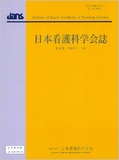Japanese
English
- 販売していません
- Abstract 文献概要
- 参考文献 Reference
要旨
目的:看護管理者のキーコンピテンシーに関するベンチマークを提示し,個人属性と施設特性の観点から看護管理者のキーコンピテンシーの関連を検証する.
方法:422施設の看護管理者9,010名を対象に質問紙調査を実施した.分析は個人属性と施設特性別に記述集計を算出し,各キーコンピテンシーを従属変数とし個人属性と施設特性を独立変数として重回帰分析を行った.
結果:看護管理者5,093名から回答が得られ,有効回答5,007名について分析した結果,キーコンピテンシーの平均得点は,状況認識17.5点,意思決定16.7点,メタ認知19.2点,キャリア支援16.4点,自己管理17.3点であった.重回帰分析の結果,5つのキーコンピテンシーに看護管理者研修,職位,施設規模,設置主体が関連していたが,キャリア支援を除く4つのキーコンピテンシーでは決定係数が5%以下であった.
結論:看護管理者のキーコンピテンシーのベンチマークを提示した.個人属性と施設特性によるキーコンピテンシーへの関連は乏しいことが示唆された.
Objectives: To examine benchmarks for key competencies of nursing managers and verify the relationship between nursing manager key competencies and individual attributes and facility characteristics.
Methods: A questionnaire survey was conducted on 9,010 nursing managers at 422 facilities regarding the key competency scale of nursing managers, personal attributes, and facility characteristics. In the analysis, descriptive tabulation was calculated for each key competency by individual attributes and facility characteristics, and multiple regression analysis was performed with each key competency as the dependent variable and the individual attributes and facility characteristics as the independent variables.
Results: Responses were obtained from 5,093 nursing managers, and analysis of 5,007 valid responses revealed key competency scores, situational awareness was 17.5 points, decision making 16.7, meta-cognition 19.2, career support 16.4 and self-management 17.3. As a result of multiple regression analysis, nursing manager training, position, organization scale, and establishment entity were related to all five key competencies. Excluding career support, the coefficient of determination for situational awareness, decision making, metacognition, and self-management was 5% or less.
Conclusion: We presented a benchmark of the key competencies of Japanese nursing managers. It was suggested that the relationship between individual attributes and facility characteristics to the key competencies of nursing managers was poor.
Copyright © 2022, Japan Academy of Nursing Science. All rights reserved.


